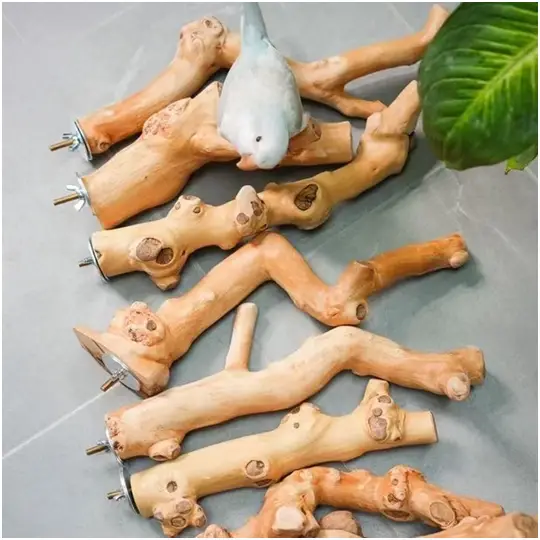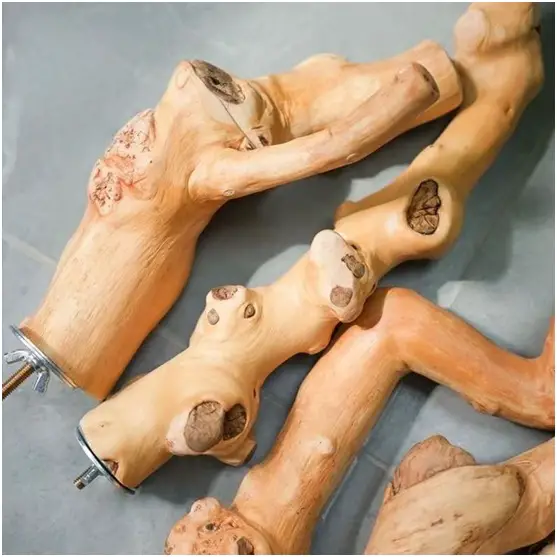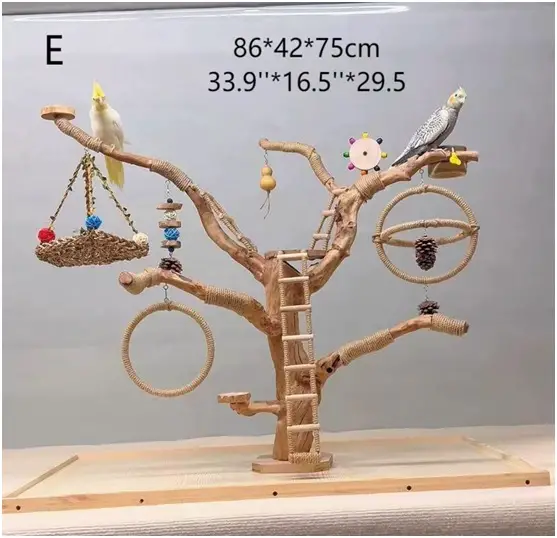Introduction
Welcome to Birdcagelab’s blog, a gathering place for tens of thousands of parrot owners and enthusiasts. We share parrot care knowledge, video tutorials, and breed introductions daily. Today, let’s discuss the importance of choosing the right parrot perch.
The Importance of Parrot Perches
Parrots spend much time on perches, whether standing, playing, or eating. A suitable perch is essential for their physical and mental health. It provides a place for them to rest, play, and interact with their environment. Therefore, the choice of perch is crucial for their well-being.

Factors to Consider When Choosing a Parrot Perch
Thickness and Length
The thickness of a perch should be similar to the width of your middle finger, allowing parrots to grip it firmly. The length should be appropriate for the cage size, not too short to be unstable, nor too long to cause inconvenience. A perch that is too short may not provide enough space for the parrot to move around, while one that is too long may protrude from the cage and pose a safety risk.

Material
Avoid using perches wrapped in cloth or paper, as they can be easily torn and swallowed by parrots. Natural branches are the best choice but avoid toxic trees such as oleander and poinsettia. Some safe options include apple, pear, and willow branches. These natural materials provide a safe and comfortable grip for your parrot and add a touch of nature to their living space.
Thermal Conductivity
Consider the thermal conductivity of the perch material. In summer, perches with good thermal conductivity can help parrots cool down, while in winter, it’s better to avoid metal perches to prevent parrots from getting cold. For example, wooden perches are a good choice for winter as they provide warmth and insulation.

Maintenance
Regular cleaning and maintenance of perches are essential for the health and well-being of parrots. Perches should be cleaned with bird-safe cleaners to eliminate bacteria and inspected regularly for signs of wear or damage. This ensures that the perch remains safe and hygienic for your parrot to use.
Conclusion
When choosing a parrot perch, consider factors such as thickness, length, material, and thermal conductivity. And don’t forget to choose a large ecological birdcage to provide your parrot with a comfortable and safe living environment. Birdcagelab offers a variety of custom bird perches and birdcages to meet your needs.
FAQs About Choosing the Right Parrot Perch
Q1: What is the ideal thickness for a parrot perch? A: The ideal thickness of a parrot perch should be similar to the width of your middle finger, allowing parrots to grip it firmly.
Q2: What materials are best for parrot perches? A: Natural branches are the best choice for parrot perches, but avoid toxic trees such as oleander and poinsettia. Safe options include apple, pear, and willow branches.
Q3: Why is thermal conductivity important for a parrot perch? A: Thermal conductivity affects the comfort of your parrot. In summer, perches with good thermal conductivity can help parrots cool down, while in winter, it’s better to avoid metal perches to prevent parrots from getting cold.
Q4: How often should I clean my parrot’s perch? A: Regular cleaning is necessary to maintain hygiene and prevent diseases. A weekly deep clean is advisable, with spot cleaning done more frequently.
Q5: Can I use metal perches for my parrot? A: Metal perches can be used, but be cautious in winter as they can get too cold. In summer, they can help parrots cool down.
